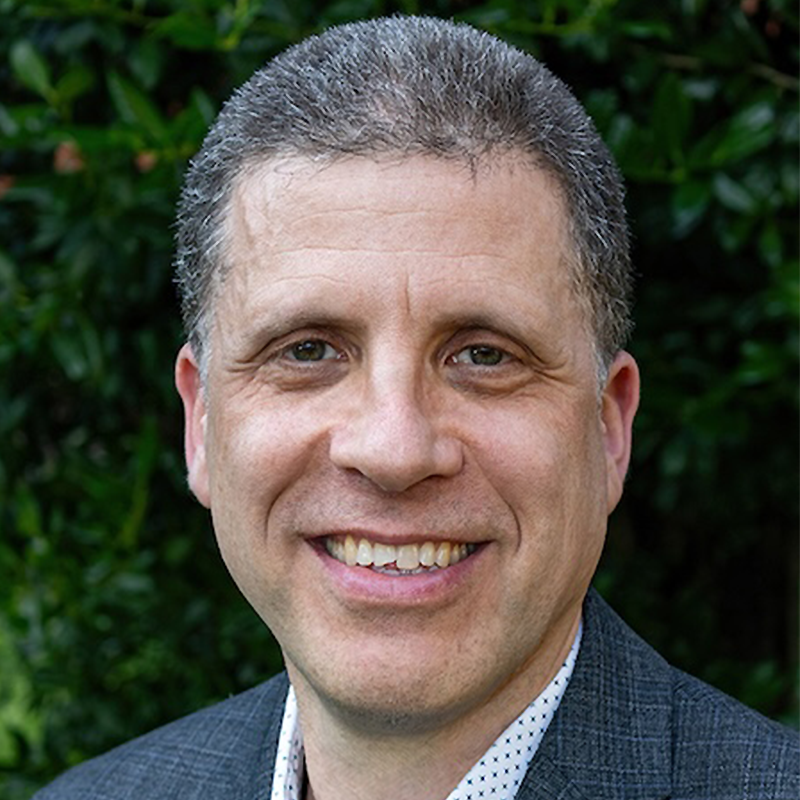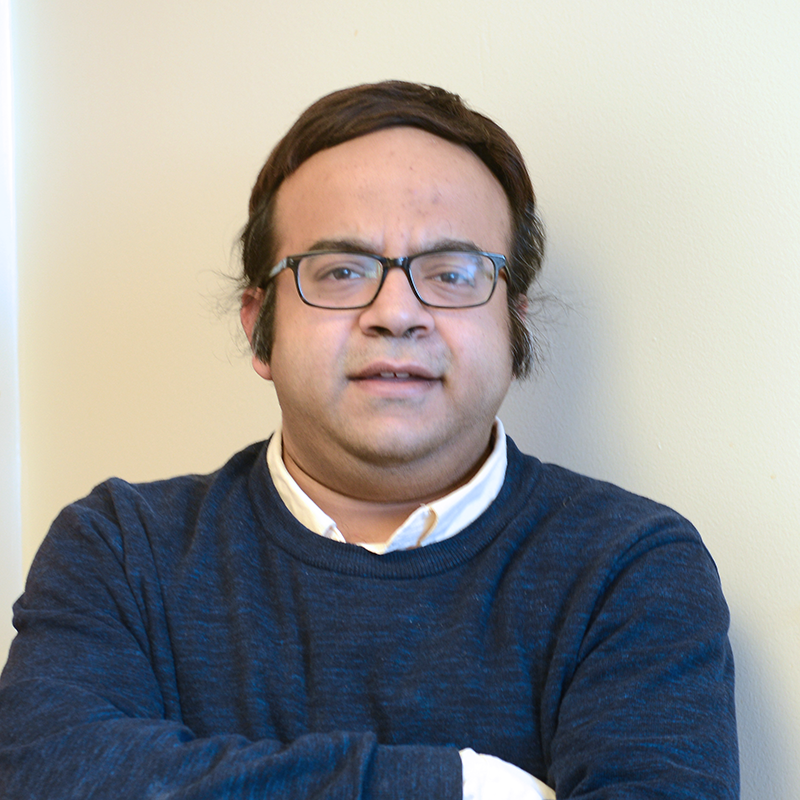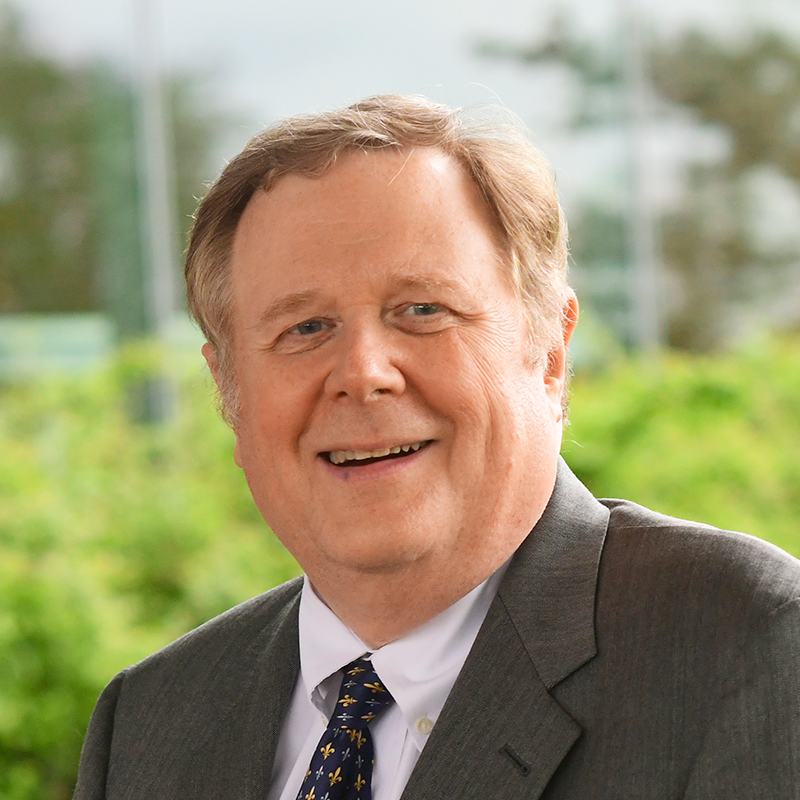News Story
Profs. Balachandran and Sandborn Winners of OTC Invention of the Year Competition
Mechanical Engineering Professors Balakumar Balachandran and Peter Sandborn were the winners of two of the three Office of Technology Commercialization (OTC) Invention of the Year Awards. These awards are granted in the Information Sciences, Physical Sciences, and Life Sciences.
Prof. Balakumar Balachandran was the winner of the Physical Science Invention of the Year. Vibration can adversely affect the performance of all kinds of complex structural and mechanical systems, including everything from aircraft and automobiles to household appliances to theaters. For example, in automobiles, aircraft and ships, vibration may cause fatigue damage, while in theaters it may be the source of a noisy environment. As a result, vibration sensors that can measure accelerations, velocities and acoustic pressure are in great demand for many industrial, defense and commercial applications.
Dr. Balachandran, an associate professor in the Department of Mechanical Engineering, and graduate student researchers Miao Yu and Moustafa Al-Bassyiouni have developed a new fiber optic sensor system for acoustic, pressure and acceleration measurements of vibration. Some of the advantages of this new system include its high sensitivity level; its ability to be miniaturized to the fiber optic diameter-level for micro-electromechanical systems, or MEMS, applications; and its remote sensing capabilities.
This patent-pending system can be developed into a fiber tip-based microphone, velocity sensor, accelerometer sensor and fiber optic acoustic intensity sensor. Its applications range from aerospace to architecture. Specific applications include acoustic emission measurements in computer hard disk drives; pressure measurements for ignition chambers of automobiles; integrated distributed pressure sensor arrays for smart wing structures; distributed acoustic pressure array panels for acoustic measurement in concert halls and conference rooms; health monitoring technologies; and background noise suppression systems in automotive telematics.
The inventors have received a Maryland Technology Development Corporation, or TEDCO, grant for $50,000 to further research and develop enhancements to the technology for commercialization. OTC is in the process of licensing this platform technology to a new, local University of Maryland start-up company.
Other ME inventions in the physical science category were "Method of Manufacturing Microfluidic Channels" developed by Asst. Prof. Elisabeth Smela and Guido Zuccarello; "Transcritical Vapor Compression Cycles with Work-Extracting Expansion Devices" by Prof. Reinhard Radermacher, Yun-Ho Hwang, and Hans-Joachim Huff; "Integrated Refrigerant Expansion Valve" by Assoc. Prof. Don DeVoe and David Yashar; "Flooded Evaporator Integrated with Accumulator" by Prof. Reinhard Radermacher, Yun-Ho Hwang, Vikrant Aute, Tim Dickson, and Ian McGregor; and "Production of Water from Air" by Prof. Reinhard Radermacher and Hisham Fawzi.
Prof. Peter Sandborn was the winner of the Information Science Invention of the Year. The life cycles of many electronic parts are often significantly shorter than the life cycles of the products in which they are used. A part becomes obsolete when it is no longer manufactured, either because demand has dropped to such low levels that it is not practical for manufacturers to continue making it, or because the materials or technologies necessary to produce it are no longer available. If system or product has a long life but is not a driving force in the market for its electronic parts, then there is a high likelihood of a lifecycle mismatch between the system or product and those electronic parts. These life-cycle mismatches can result in high maintenance costs for long-life systems.
Peter Sandborn, an associate professor in the Department of Mechanical Engineering, and Pameet Singh, a graduate student researcher, have developed a new methodology for determining the optimum design refresh (redesign) schedule and strategy for long-life electronic systems based on future production projections, maintenance requirements, and parts obsolescence forecasts. The methodology, called Mitigation of Obsolescence Cost Analysis, or MOCA, is the first of its type for parts-obsolescence-driven refresh scheduling and optimization.
Based on a detailed cost analysis model, MOCA determines the optimum design refresh plan during the field support life of the product. The plan consists of the number of design refresh activities and their respective calendar dates and content in order to minimize the life-cycle sustainment costs of the product. The methodology supports user-determined, short- and long-term obsolescence mitigation approaches on a per-part basis and variable look ahead times associated with design refreshes. MOCA also presents a mix of obsolescence mitigation approaches ranging from lifetime buys to electronic parts substitutions.
The methodology has been demonstrated on Honeywell International’s Full Authority Digital Electronic Controller, which is a long-life, low-volume, safety-critical component used in engines for regional jets.
Another ME invention in the physical science category was "Process Planning Software for 3D Replication of Scanned Objects" by Assoc. Prof. Satyandra K. Gupta, Mandar M. Chincholkar, Rohit Kumar, Alok Priyadarshi, and Zhiyang Yao.
The OTC at the University of Maryland was established in 1986 to facilitate the transfer of information, life and physical science inventions developed at the university to business and industry. In the past 16 years, OTC has recorded more than 1115 technologies, secured more than 180 patents and licensed more than 600 technologies, generating more than $20.8 million in technology transfer income. In addition, more than 30 high-tech start-up companies have been formed based on technologies developed at the university.
Published April 15, 2003









